Jade plant care is straightforward and it has lots of benefits as well. Many individuals enjoy growing jade plants at home and in their offices, and they are thought to be lucky symbols.
To understand what the proper caring and maintenance of jade plants is, you don’t need to be fortunate. Listed below are the top benefits of jade plant and how to care it.
Have a look below at the index file where we have listed what all information you will be getting here. Navigate through the links given below to get the right information about the jade plants.
- What is Jade Plant
- Types of Jade Plant
- Jade Plants Benefits
- How to care a Jade Plant
- Light
- Temperature
- Watering
- Fertilize
- How to Propagate a Jade Plant
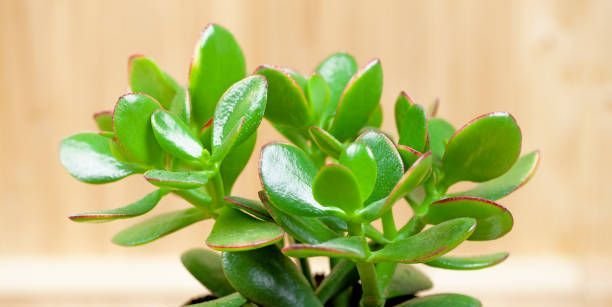
What is a Jade Plant?
Scientific Name: Crassula Ovata, Commonly known as jade plant
Crassula is some of the easiest succulents to grow in pots, and they make excellent bonsai subjects due to their low upkeep requirements and distinct appearance. These low-maintenance plants thrive in dry soil, with a normal humidity level, and shade.
Jade is very susceptible to decay, and even while it is growing, the soil should be allowed to fully dry between waterings because jade is sensitive to rot. They are very sensitive to cold damage, so it’s best to grow jade in pots and bring them indoors when temperatures drop below 50°F (10°C).
Note: Also ready about areca palm benefits before bringing it home.
In mid-to late winter, Crassula ovata blooms appear on mature plants. These tiny, star-shaped white or pink blossoms grow in clusters. When the plant blooms, two or three clusters of flowers will open.
Maturity and sunlight, as with many other flowering succulent plants, The secret to jade plant blooming lies in its nutrient needs. The key is patience as the plant matures. Sunlight, once the jade plant has matured, becomes the major influence on its blossoms.
Jade plants require at least four hours of sunshine per day but ideally six or more hours of direct sunlight. They flourish under bright, filtered light from a south-facing window and two to six hours of direct sunshine indoors.
Also read: Snake plant benefits and its varieties.
Jade Plant Types
From the classic green-leafed jade to a variety of variegated types, there are several varieties available.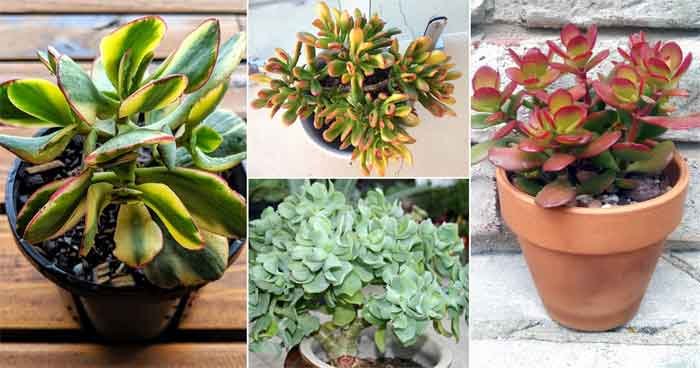
Copper Jade Tree (Crassula ovata ‘Bronze Beauty‘): This kind of jade plant has tiny coppery green leaves on stems that do not grow very quickly.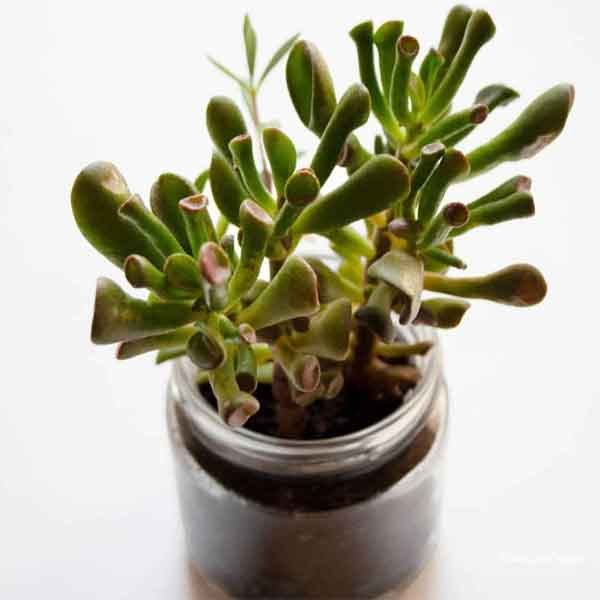
Sunset Jade Tree (Crassula ovata ‘Sunset‘): The leaves are bordered in gold in strong sunshine. In its natural environment, it is quite beautiful as a big plant.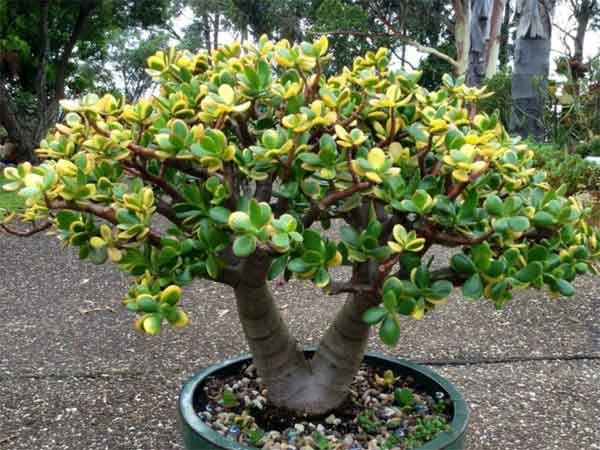
Hobbit Jade (Crassula ovata convulta ‘Hobbit‘): This sluggish growing jade has pipe-shaped, tubular leaves with red tips. It will grow to be three feet tall.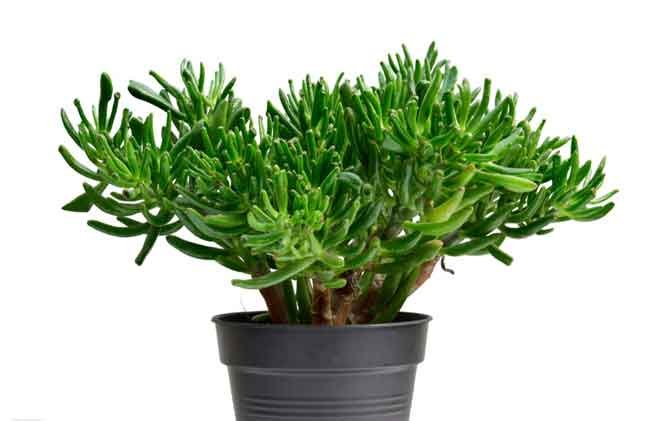
Jade Tree (Crassula Ovata): This is the most often cultivated jade plant. Succulent glossy green leaves are supported by sturdy brown trunks. The blooms, which are starry and white, have a delicate fragrance that lingers in the air.
Jade Tree (Crassula ovata ‘California Red Tip‘) has purple-red edged leaves in moderate light to full sun.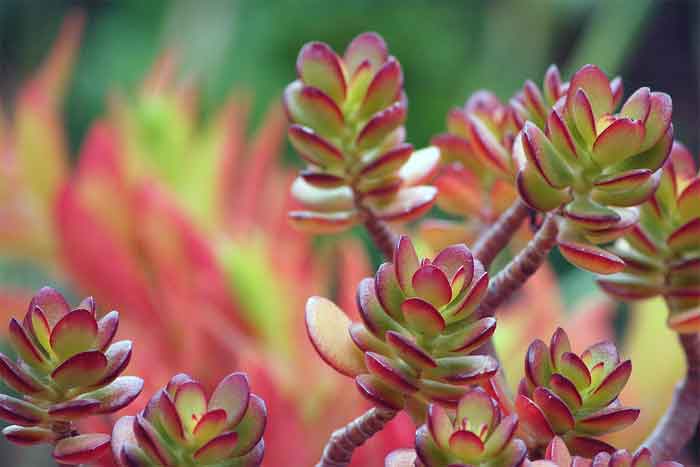
Crassula arborescens is a delicate, easy-to-grow succulent plant with blue flowers that grows in a variety of colors. It has blue-gray leaves with red margins and small, rounded heads of pink flowers.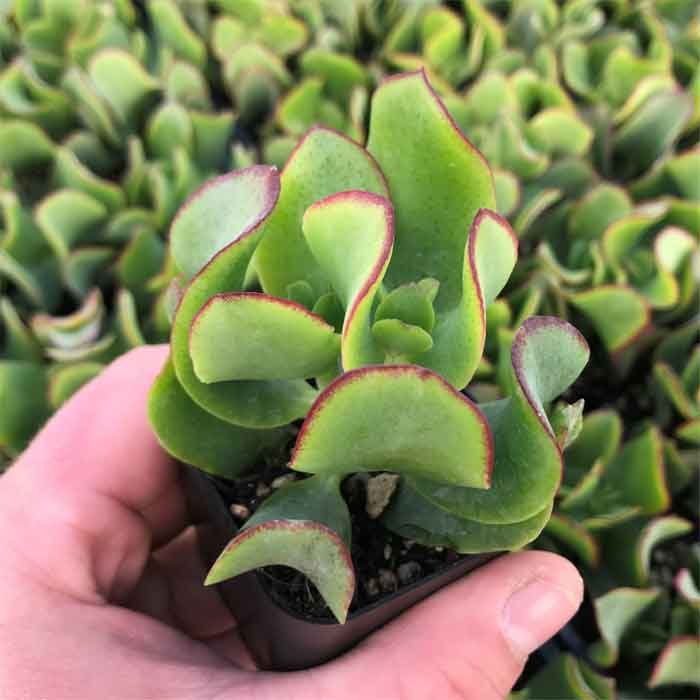
Crassula ovata ‘Tricolor‘ is an excellent choice for succulents that require a lot of light and warmth. It has creamy white-and rose-striped pointed leaves, as well as pink and white blooms.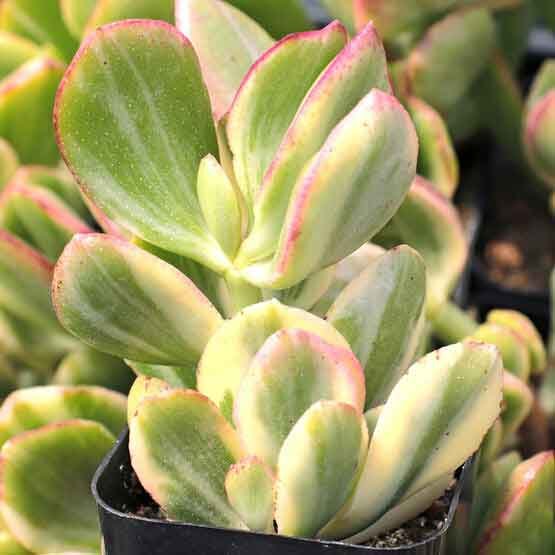
Jade Plant Benefits
- Jade plants are known to bring good luck, and they are often given as gifts for special occasions such as graduations, new jobs, and housewarmings.
- Jade plants are also believed to have positive Feng Shui energy. According to the principles of Feng Shui, jade plants can be used to create a sense of balance and harmony in your home or office.
- Jade plants are also known for their ability to purify the air. They remove carbon dioxide and release oxygen, making them ideal for use in small spaces such as offices and dorm rooms.
- Also read about spider plants benefits here before taking it home.
How to Take Proper Care of a Jade Plant?
Light
- Plants grown in Jade soil should be kept at least six hours each day in direct sunshine. Young jade plants should be exposed to bright, indirect light; large, mature jade plants can withstand the more direct sun.
- South-facing windows in kitchens and offices are ideal environments, as are western-facing windows.
- Jade plants growing in low light can grow leggy and top-heavy, making them vulnerable to damage if they fall over or are unable to maintain their branches!
- To know about benefits of money plants have a look here.
Temperature
- Jade is not frosted tolerant, therefore while caring a jade plant, if you leave it outside during the summer for maximum benefits, bring it in when temperatures drop below 50°F and eventually below 40°F (5°C).
- Jade plants might leave their leaves if exposed to cold temperatures for an extended period.
Here is how to care swiss cheese plant indoor and outdoor along with its benefits, propagate while bringing home.
Watering a Jade Plant
- To care and grow a jade plant, it is critical to water jade plants properly! To get maximum benefits, water jade plants deeply (that means the soil is sufficiently moistened throughout rather than just on the surface) before watering again after it has dried out.
- It won’t require much water during this time. Allow the soil to dry out completely between waterings rather than watering it more rarely in the spring and summer.
- It is crucial to allow jades time to rest. If you buy a small, young plant from a garden center or online vendor, it will be impossible to know how much water it requires during its dormant period and you need to care a lot for the plant.
- Your succulent can be infested with root rot if it gets wet from a sprinkler or rain, especially if there was no good drainage in the pot. In particular, keep an eye out for browning leaves and blackened roots that are indications of root rot. I’d only recommend watering them when the soil is completely dry.
- If the plant’s leaves begin to drop, look shriveled, or develop brown spots, it is an indication that it requires more water. Take care of the plant to get maximum benefits.
- Plants can soak up water anytime rain is abundant. If the leaves become soft and soggy, the plant is getting too much water.
Do not forget to read about vastu for money plant and right direction to place a money plant at home.
Fertilize
- A diluted combination of a regular liquid houseplant fertilizer or a fertilizer for cacti and succulents is sufficient.
How to Propagate Jade Plant?
Cuttings from a jade plant are easy to grow. Stem propagation is generally faster and more successful than leaf propagation. Propagate jade plants during the summer months by using healthy, disease-free cuttings.
- Remove any lower leaves from the stem cutting, allow it to dry, and harden before snipping off a few inches of stem above a leaf node with a clean sharp knife.
- Small white roots will grow in approximately three weeks. Treat the rooted end like you would an ordinary jade plant once roots have developed.
- Allow drying for several weeks to months. When tiny white roots appear, the leaf will start to wilt and brown.
- Water gradually until you see a little new stem and leaf grow out. Treat as you would a jade plant when they are several inches tall.
Also read about: Croton Plants | Dieffenbachia Seguine
Conclusion
Jade plant are one of the most durable, adaptable, and beautiful houseplants available. They can survive for decades if properly cared for. Water jade plants thoroughly but allow the soil to dry out completely between waterings to preserve them from becoming too root-bound.
Jade plants may be propagated through cuttings from the stem or leaves. During the spring and summer, feed them with a cactus or succulent fertilizer lightly. Your jade plant will provide beauty for many years to come!
Have a look at the latest money plant decoration ideas to decorate your home with plants here.



This is the first time I am discovering such a versatile and great plant that will be perfect for both house and office. I am so glad I came across this article that made me understand the Jade plant and its benefits and also how to take care of it. I adore how low maintenance the plant is alongside it being a lucky plant. I love how it has so many types, I loved them all, but I chose two of them that were best suitable, one for my home and one for my office. Thank you for publishing this.